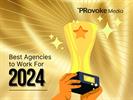Paul Holmes 22 Apr 2001 // 11:00PM GMT
Intuit, maker of the popular Quicken and TurboTax software, sponsors the Quicken Tax Freedom Project (QTFP) both to provide the benefits of Internet services to lower income Americans and demonstrate the benefits of public-private partnerships as government moves into the Internet age. The program responds to the IRS’ goal to have 80% of all tax returns electronically filed by 2007 and Intuit’s desire to keep the development of tax software products in the hands of the private sector. Through QTFP, Intuit donated its online tax preparation and filing service to all taxpayers filing a 1040EZ and to those earning $20,000 or less, regardless of the forms the filed, for tax year 1999. The communications program to support QTFP delivered outstanding results, driving a 650%+ increase in the number of taxpayers using the program and helping create strong partnerships with lawmakers and revenue agencies.
CHALLENGE
While the efforts of state and federal government to move the tax process online is important and worthy, two key challenges emerge. First, how does society ensure that all citizens – not just the wealthy – have access to the benefits of e-government? Second, should government invest public funds to develop proprietary products and services, or partner with private enterprise, which has already created effective solutions?
RESEARCH
Lower income taxpayers who qualify for the Quicken Tax Freedom Project comprise about 45% of the total taxpayer base. With computer ownership relatively low among lower income taxpayers (only about 17% of low income households own computers vs. about 80% of households earning $75,000 or more), it was essential to communicate free public access at 75% of libraries nationwide, at local community centers and through a partnership with Kinko’s. We also learned through media outreach that many reporters saw the program as a marketing ploy, not a philanthropic effort.
PLANNING
We develop a two-pronged approach to the QTFP communications program to reach both lawmakers/revenue officials as well as the taxpayers who qualified for the program.
OBJECTIVES
Encourage state and federal revenue agencies to partner with the private sector to offer online tax services to their constituents
Drive a significant increase in the number of people using the program
TARGET AUDIENCES
Elected and appointed officials
Consumers who qualify for the program
STRATEGIES:
Enlist lawmakers and financial institutions to support and promote program
Emphasize philanthropic nature of program
Communicate availability of free Internet access at public libraries, other locations
CAMPAIGN EXECUTION
1. Public Affairs Program to Raise Awareness Among Lawmakers
Created four model partnerships (MN, WV, WI and Congressman Rangel in NYC) to show benefits of business and government working together to provide online tax services.
Supported and showcased partnerships with outreach to local schools and libraries and through media events featuring local officials and leaders, including press conference with WV Governor Underwood to launch the program.
Extended outreach by creating “Program in the Box” materials for state and federal lawmakers and revenue officials to localize and publicize QTFP in their communities.
2. Consumer Program to Drive Usage
Extended WV launch event with opportunistic pitching, national press release, mat releases, radio news release and VNR.
Staged on-campus promotion at U. of Minn. to raise awareness of program, with outreach to college media via U-Wire and targeted pitching.
Formed partnerships with Kinko’s and financial institutions to promote program locally.
RESULTS
1. Public Affairs Program to Raise Awareness Among Lawmakers
Won the 2000 Council of State Governments' Public/Private Partnership Award, recognizing the program's support of state revenue departments' goals of increasing electronic filing and Intuit's commitment to bridging the 'Digital Divide.'
Secured local coverage of program in model partnership states.
Based on success of model partnership program last year, Congressman Rangel kicked off the national program for tax year 2000 in his District in Harlem on Feb. 2, 2001.
2. Consumer Program to Drive Usage
More than 764,000 federal returns were donated, a 700% increase over the prior year; 375,000 state returns were donated, an increase of 650% over prior year.
Total media impressions exceeded 53 million, up 62% over the prior year.
Key hits included CNN segment that was re-broadcast 46 times, and AP article that ran in 45 markets, Washington Post and Business Week.
The radio news release reached an audience of more than 12 million.
Nearly 25% of print coverage resulted from partnerships with financial institutions.
The mat release targeting African American taxpayers resulted in 44 articles with readership of approximately three million.
Specific program qualifications mentioned in more than 80% of articles.


































.jpg)

















